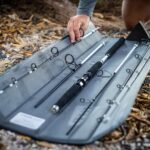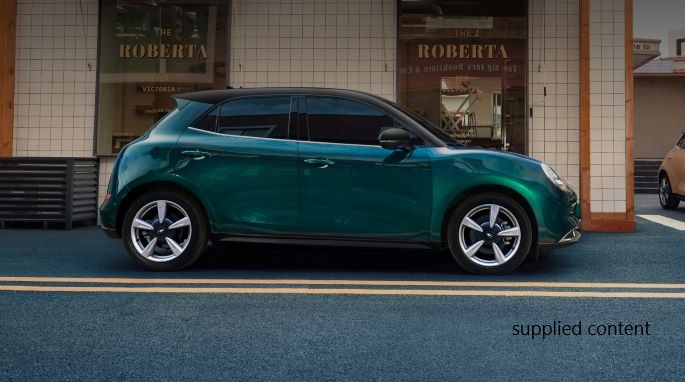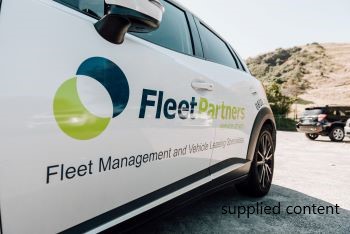When the feeling is electric
NZBusiness editor Glenn Baker has finally experienced life behind the wheel of an electric vehicle. So what is his verdict?
NZBusiness editor Glenn Baker has finally experienced life behind the wheel of an electric vehicle. After spending time with Hyundai’s IONIQ Series II EV he’s reluctant to revert to his petrol-driven ways.
Before I get started, I want to make it clear that I am not a technical person. I know little about electric vehicles – apart from the fact that their acceleration is deceptively fast (thanks to a joyride in Steve West’s Tesla a few years back), they make a weird whistling sound as they glide past, and I’m seeing an increasing number of them on my nightly walks around my neighbourhood (seriously, I count them so I know!).
I jumped at the opportunity to test-drive Hyundai’s IONIQ Series II recently because it was a chance to satisfy my curiosity – to see if the EV reality lived up the hype.
Well after five days – in fact, after five minutes – I can assure you that it does. The whole experience far exceeded my expectations.
I have a wad of marketing blurb I could bore you with on this EV, but I’m no motoring journalist and I can summarise what I like about the IONIQ in a few simple sentences.
For a start it is whisper quiet – the only sound you hear, apart from all the standard alarms and reminders you get on any modern vehicle, is the gentle hum of the tyres.
The acceleration is smooth and constant – words I thought I’d never use when describing a car’s performance. The deceleration is also very strong. At first I thought the brakes had engaged prematurely. But then I read up about an EV’s regenerative braking system. Turns out that when you lift your foot off the accelerator, the system temporarily converts the electric motor that powers the car into a generator, which then converts the kinetic energy of the car’s forward momentum back into electricity and feeds it into the battery pack.
Obviously I had to look that all up.
It just means that it feels like you’ve dropped the car into a lower gear or braked moderately. It’s almost driving with one pedal.
As I discovered, it’s possible to cruise up to the traffic lights and come to a halt, without applying the brake until the very last second – just to ensure the car remains stationary.
I believe features like these can make you drive safer and smoother. That’s what I experienced. It just becomes automatic.
I should also mention that the primary purpose of the regenerative braking system on any electric vehicle is to reduce the discharge rate of the battery, thereby extending the vehicle’s range. In the case of the IONIQ Series II that range is 33 percent up on its predecessor, at 311 kilometres.
The Hyundai IONIQ Series II EV also features Adjustable regenerative braking and Smart regenerative braking – where the level of regenerative braking is automatically controlled in response to the traffic ahead – with input from the front radar sensor.
As I said, I won’t bore you with the extremely long list of smart features built into this EV – that would require a large book. Needless to say, driving this roomy five-door hatchback was an absolute pleasure.
On the charge
I’ve often heard the expression ‘range anxiety’ whenever there’s mention of pure electric vehicles, and after a trip out of town I could understand why. After all, you don’t see a row of charging units at all the gas stations you pass by.
But a quick Google search quickly revealed just how many charging stations there are scattered around the country. According to www.leadingthecharge.org.nz/charging-sites as of Jan 2020, there are 144 DC rapid charging stations in the North Island and a further 65 in the South Island … plus another 300+ AC charge points registered on Plugshare.
It was only after utilising a rapid charging station (thanks to ChargeNet!) that I discovered the three-pin plug-in charger in the Hyundai’s boot. (Somebody hadn’t been paying attention!)
Turns out you can simply trickle-charge your EV overnight so it’s all ready to go in the morning.
That’s easy. (Although if you’re an EV owner it’s recommended you invest in a proper charging unit at home to reduce the charge time.)
I guess range anxiety won’t go away overnight, particularly for owners of older EVs who’re planning longer trips. But for new generation EVs like the IONIQ I drove, or Hyundai’s Kona Electric with an even more impressive 449 kilometre range, it’s just not an issue. And, as the numbers of EVs on New Zealand’s roads continue to steadily climb, so too will the charging network grow in response.
Looking back, my time with the Hyundai IONIQ Series II was fleeting, but the experience will remain with me for a long time – hopefully until EV prices have come down a little more across the board and I can afford to make the switch from my conventional ICE (internal combustion engine) powered car.
For my sake, and the planet’s, I hope that time comes soon.
To learn more about the Hyundai IONIQ Series II go to https://www.hyundai.co.nz/ioniq






